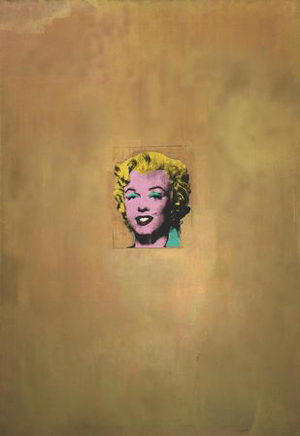| Search Art Prints | ||||||||||||||||||||
| Search Artists | ||||||||||||||||||||

|
||||||||||||||||||||
|
|
|||||||||||||||||||

Gold Marilyn Monroe

|
In retrospect, Andy Warhol's innovation in the realm of portraiture seems obvious. By the mid-20th Century, the portrait had ceased to be one of painting's leading disciplines. The most commonplace source of visual information about famous personages was no longer the painting, but the photograph.
Warhol, brilliantly, used a photograph to reinvigorate the painted portrait. By taking the photograph directly into the domain of pictorial art, he was able to capture an aesthetic once exclusive to photography. In this case, the photo serves not as an external reminder to the painter; the photo has become the painting itself. The interpretative function of the artist has been eliminated, and yet Gold Marilyn Monroe is clearly a painting.
Taking a head shot of Marilyn Monroe, Warhol silkscreened the image in a single color, gold, and placed it in the center of the frame. He created, in effect, a 20th-Century saint. Just as people in the Middle Ages accepted as fact the hand-painted images of Christian figures on their church walls, modern Westerners have come to unconditionally accept the truth of machine-made photographs. Indeed, this famous image of Monroe is one we have come to accept as reality; we equate this image of Monroe with the woman herself. Here, her visage floats in an ethereal, timeless heaven. She gazes out from the frame benignly, like a protective spirit, commanding earthly awe and veneration--not unlike the Virgin Mary. The photograph, the reality, has thus been transformed into the surreal, the god-like. The everyday has been remade into the auspicious. This is the function of classical Western portraiture, which Warhol succeeded in re-inventing for the 20th Century.











